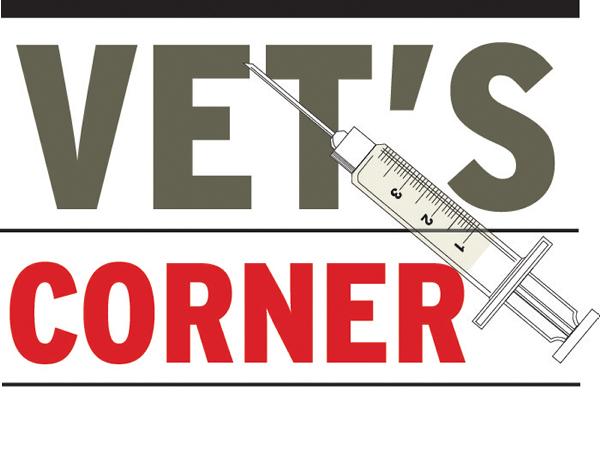Year one of the Knowledge Transfer (KT) programme concluded on 31 July. As a practising vet, KT was both a rewarding and a challenging experience.
Not knowing how many of our farmers were in the programme really put a strain on time management and planning in veterinary practices all around the country.
As predicted by many colleagues, the latecomers on the last weekend had plenty of vets working all weekend in an effort to meet the deadline.
That said, the on-farm risk assessment allowed participating farmers and their vets to set aside a couple of hours to really examine farm performance and make some practical recommendations for future improvements.
This is especially true for sheep farmers, many of whom do not regularly seek veterinary advice.
However, this situation is changing in recent years, especially with larger flocks.
I recently collated the data from 101 sheep on-farm risk assessments completed by our practice, which is situated in a high-density sheep area.
Statistical analysis was performed by a colleague proficient in this area and the results are interesting. This is a summary:
Flock size ranged from 30 to 950 ewes, with a mean of 130. Average scanning rate was 1.75%. Mean weaning rate was 1.52%.Lamb mortality mean was 10.2% and ranged from 3.4% to 25%. Only 25% of farms achieved target lamb mortality of <7%. Larger flocks performed better in this regard. A lamb born into the larger flocks was 5.5 times more likely to survive than in smaller flocks.54% of flocks achieved target ewe mortality of <3%. Flocks fared better achieving target for abortion rates of <3%, with 73% of the flocks hitting the mark. Interestingly, flocks that achieved target on abortion rates had significantly improved lamb survival rates. Lambs in these flocks were 5.5 times more likely to survive than in flocks not achieving target.The blanket use of oral antibiotics at lambing did not have any effect on lamb mortality compared with flocks that didn’t engage in this practice.The data shows that considerable improvement is possible on lots of our sheep farms that could potentially increase output and profit for the farmers involved.
I am confident that by implementing two or three of the priority recommendations will yield results for our farmers.
I am looking forward to working with our farmers to this end and seeing how 2018 progresses.
Conor Geraghty MVB Cert DHH works at Geraghty & Neary Veterinary Surgeons, College Rd, Mountbellew, Co Galway. Geraghty & Neary Veterinary Surgeons are part of XLVets. XLVets is a group of progressive practices who are working together to achieve a better future for agriculture and veterinary in Ireland. For further information go to www.xlvets.ie.
Year one of the Knowledge Transfer (KT) programme concluded on 31 July. As a practising vet, KT was both a rewarding and a challenging experience.
Not knowing how many of our farmers were in the programme really put a strain on time management and planning in veterinary practices all around the country.
As predicted by many colleagues, the latecomers on the last weekend had plenty of vets working all weekend in an effort to meet the deadline.
That said, the on-farm risk assessment allowed participating farmers and their vets to set aside a couple of hours to really examine farm performance and make some practical recommendations for future improvements.
This is especially true for sheep farmers, many of whom do not regularly seek veterinary advice.
However, this situation is changing in recent years, especially with larger flocks.
I recently collated the data from 101 sheep on-farm risk assessments completed by our practice, which is situated in a high-density sheep area.
Statistical analysis was performed by a colleague proficient in this area and the results are interesting. This is a summary:
Flock size ranged from 30 to 950 ewes, with a mean of 130. Average scanning rate was 1.75%. Mean weaning rate was 1.52%.Lamb mortality mean was 10.2% and ranged from 3.4% to 25%. Only 25% of farms achieved target lamb mortality of <7%. Larger flocks performed better in this regard. A lamb born into the larger flocks was 5.5 times more likely to survive than in smaller flocks.54% of flocks achieved target ewe mortality of <3%. Flocks fared better achieving target for abortion rates of <3%, with 73% of the flocks hitting the mark. Interestingly, flocks that achieved target on abortion rates had significantly improved lamb survival rates. Lambs in these flocks were 5.5 times more likely to survive than in flocks not achieving target.The blanket use of oral antibiotics at lambing did not have any effect on lamb mortality compared with flocks that didn’t engage in this practice.The data shows that considerable improvement is possible on lots of our sheep farms that could potentially increase output and profit for the farmers involved.
I am confident that by implementing two or three of the priority recommendations will yield results for our farmers.
I am looking forward to working with our farmers to this end and seeing how 2018 progresses.
Conor Geraghty MVB Cert DHH works at Geraghty & Neary Veterinary Surgeons, College Rd, Mountbellew, Co Galway. Geraghty & Neary Veterinary Surgeons are part of XLVets. XLVets is a group of progressive practices who are working together to achieve a better future for agriculture and veterinary in Ireland. For further information go to www.xlvets.ie.






 This is a subscriber-only article
This is a subscriber-only article





SHARING OPTIONS: